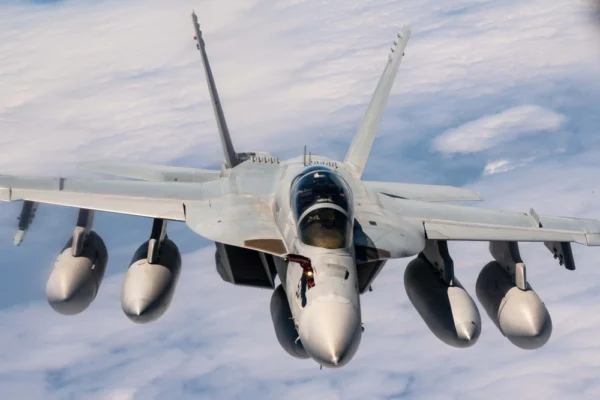In the 2024 Pacific Rim military exercise, the new long-range air-to-air missile AIM-174B carried on the US Navy F-18 Super Hornet fighter jet has captured people’s attention. With a range surpassing the People’s Liberation Army’s PL-15 missile, the AIM-174B possesses three key advantages, allowing the US Navy to eliminate China’s air strike dominance in the region.
The AIM-174B is an air-launched variant of Raytheon’s versatile SM-6 missile and is the longest-range missile of its kind deployed by the US so far, officially certified in July.
According to Reuters, the AIM-174B has three key advantages: its flight range is multiple times greater than the US’s second-best missile, the AIM-120 AMRAAM; it doesn’t require new production lines; and it can be compatible with at least one aircraft from a US ally, Australia.
Most importantly, weapons like the AIM-174B can target airborne assets as far as 400 kilometers (250 miles) away, surpassing the range of China’s PL-15 missile, allowing the US military to keep threats away from aircraft carriers and safely target China’s “high-value” assets such as command and control aircraft.
Unlike the AIM-120, a standard long-range missile with a maximum range of about 150 kilometers (93 miles), the AIM-174B enables attacks from a safer distance, reducing the risk for carrier strike groups facing anti-ship threats when entering disputed territories.
Within the first island chain, any South China Sea conflict would require the US Navy to operate within hundreds of kilometers from Chinese military forces. Supporting Taiwan in a Taiwan Strait conflict would necessitate even closer engagement.
Quoting Chieh Chung, a researcher at the Taipei think tank “Institute for National Defense and Security Research,” Reuters reported that the AIM-174B changes this scenario, preventing Chinese carrier-killing aircraft from entering its range and potentially jeopardizing Chinese aircraft attacking Taiwan.
“The US can ensure the safety of its vital assets, such as carrier strike groups, and carry out long-range strikes against Chinese military targets,” Chieh Chung said.
A senior US defense technology analyst stated, “Most importantly, it allows the US to escalate further in a conflict in the South China Sea. This could alter China’s behavior by putting large, slow, and less maneuverable aircraft at greater risk.”
The analyst noted that while the quantity of AIM-174B in the US Navy’s arsenal may still be limited, its addition changes the calculus of regional conflicts.
“If it’s enough to keep China’s high-value aircraft at bay, you don’t need a lot,” the analyst said. “Because the threat leads to changes in behavior… making the situation in the South China Sea more manageable.”
Thus far, the AIM-174B has only been demonstrated on US Navy F/A-18E/F Super Hornet aircraft, operated by the US and Australian militaries.
The US views Australia as a crucial ally and a location to project power into the South China Sea, investing hundreds of millions of dollars in constructing military infrastructure there.
Australia’s Department of Defense stated that it “closely collaborates with the US to understand the capability options available for consideration.”
The US Navy confirmed that the AIM-174B missile has been “deployed for operational use,” but declined to comment on whether it will be supplied to allies, integrated onto other aircraft, or the annual demand for AIM-174B.
According to “The War Zone” report, the inclusion of the AIM-174B in the Navy’s inventory suggests it is specially tailored for penetrating China’s anti-access layer far beyond its coastline. It offers a new means for the US Navy to weaken China’s blockade capabilities around Taiwan and provide unprecedented aerial protection for naval assets against long-range threats.
The US Navy further confirmed to “The War Zone” that the AIM-174B is in use within the Navy. If the air-launched AIM-174B retains the SM-6’s ballistic missile defense capability (there’s no reason to believe it doesn’t), it can extend the terminal defense coverage beyond what surface combatants can currently provide in a short time frame.
Pairing AIM-174-equipped Super Hornets with destroyers equipped with Aegis systems in the region significantly expands the missile defense protection umbrella for naval vessels.
“The War Zone” noted that the missile’s capability to intercept hypersonic weapons is crucial for countering anti-ship hypersonic cruise missiles targeting naval battle groups or other high-value target areas. The SM-6 is currently the only known US missile interceptor theoretically capable of intercepting hypersonic weapons.
In addition to the AIM-174, the Lockheed Martin AIM-260, a separate project for the US Air Force, aims to develop a super long-range air-to-air missile small enough to be carried internally by stealth aircraft.
Lockheed Martin declined to comment to Reuters on the AIM-260 project.

